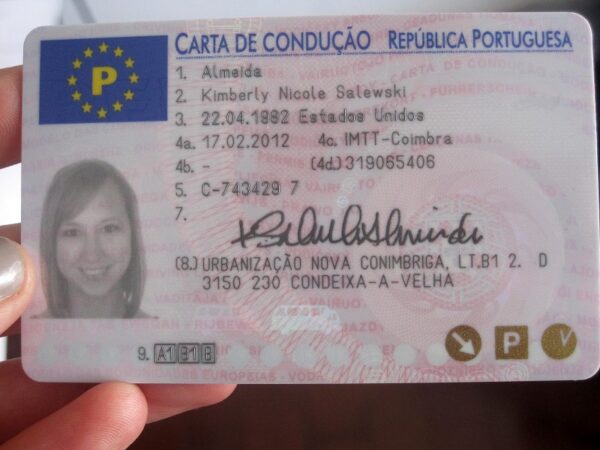Understanding the Driving Test: A Comprehensive Guide
Starting the journey to acquire a motorist's license is an interesting yet daunting experience for lots of. The driving test, typically thought about the essential point in this journey, examines a prospect's ability to operate a vehicle safely and responsibly. In this thorough guide, we will explore the complexities of the driving test, covering its purpose, structure, requirements, and pointers for success. We will also address often asked questions to more clarify the process.
The Purpose of the Driving Test
The driving test serves several crucial functions:
- Safety Assurance: The primary goal of the driving test is to ensure that motorists can run automobiles securely. This is critical in preventing mishaps and making sure road safety for both motorists and pedestrians.
- Assessment of Knowledge: The test evaluates a candidate's knowledge of traffic laws, road indications, and safe driving practices.
- Skill Evaluation: Beyond theoretical understanding, it evaluates useful driving skills, including maneuverability, parking, and adherence to traffic regulations.
- Regulatory Compliance: Each region has particular laws governing automobile operation. The driving test makes sure that all chauffeurs are conscious of and adhere to these policies.
Structure of the Driving Test
While the particular structure of driving tests may vary by state or nation, they usually follow a typical format, which can consist of the following elements:
1. Written Knowledge Test
Before striking the road, candidates generally should pass a composed understanding test, which consists of:
- Traffic Signs and Signals: Identifying various signs and signals, understanding their significances and appropriate reactions.
- Roadway Rules: Questions on speed limitations, right-of-way guidelines, and actions to take in various traffic situations.
- Danger Awareness: Scenarios to examine a candidate's ability to acknowledge and respond to possible road dangers.
2. Vision Test
A vision test ensures candidates can sufficiently see to drive. Candidates are normally asked to check out letters or numbers from a range, ensuring they fulfill the vision requirements set by regulative authorities.
3. Road Test
The most significant element is the useful roadway test. Comprar Cnh Online is where candidates show their abilities under the observation of a licensed examiner. The roadway test normally consists of:
- Pre-Drive Checklist: Checking mirrors, seat belts, and environments before beginning.
- Basic Maneuvers: Performing jobs such as parallel parking, turning, and lane changes.
- Traffic Interaction: Navigating through traffic, complying with speed limitations, and yielding the right of way.
- Emergency Situations: Demonstrating how to respond to unanticipated road scenarios.
Table: Typical Driving Test Components
| Component | Description |
|---|---|
| Written Knowledge Test | Multiple-choice examination covering roadway rules and signs |
| Vision Test | Ensuring candidate meets minimum vision requirements |
| Roadway Test | Practical evaluation of driving abilities in genuine traffic scenarios |
Requirements for Taking the Driving Test
Before a prospect can schedule their driving test, there specify requirements that typically require to be satisfied, including:
- Age Requirements: Many regions have minimum age requirements (e.g., 16 or 18 years of ages).
- Knowing Permit: Candidates typically require to have actually held a learner's license for a given period (frequently 6 months to a year).
- Driver Education Course: Some regions need completion of a chauffeur's education course, which may include both classroom and practical training.
- Documentation: Candidates need to present valid recognition, proof of residency, and any completed documentation needed by the local Department of Motor Vehicles (DMV) or comparable authority.
(FAQs) Frequently Asked Questions
Q1: How do I arrange my driving test?
A1: Candidates can usually arrange their driving tests through the site or workplace of their regional DMV or licensing authority. Online reservation options are frequently available for convenience.
Q2: What should I bring on the day of my driving test?
A2: Candidates ought to bring their student's license, documentation proving residency, evidence of recognition, and a roadworthy vehicle. In addition, any kinds supplied throughout the scheduling must also be brought along.
Q3: What happens if I fail my driving test?
A3: If a prospect stops working the driving test, they are generally enabled to retake it after a waiting duration, which can range from days to weeks, depending on the area's policies. It's recommended to practice the abilities that require enhancement before retaking the test.
Q4: How long is the driving test?
A4: The duration of a driving test can differ but typically lasts in between 20 to 30 minutes, depending on the intricacy of the route and the particular requirements set by the testing authority.
Tips for Success
Preparation is crucial to passing the driving test. Think about the following ideas:
- Practice: Regularly practice driving in various conditions and circumstances to grow comfortable behind the wheel.
- Know the Laws: Familiarize yourself with local traffic laws, indications, and regulations to perform well on the composed test and road test.
- Take a Mock Test: Have an experienced motorist accompany you for a practice test to imitate the actual experience and supply positive feedback.
- Stay Calm: On the day of the test, try to stay calm and gathered. Anxiety can impede efficiency, so practice relaxation techniques beforehand.
- Use Clear Signals: During the road test, guarantee to utilize proper signaling and inspect mirrors often. Clear communication with other road users is vital.
The driving test is a vital action in obtaining a chauffeur's license and making sure road safety. By understanding its structure, preparing effectively, and keeping common questions in mind, candidates can approach the driving test with confidence. Whether it's the composed understanding exam or the useful driving assessment, diligent preparation and a calm behavior are aspects that can significantly affect success on the roadway.

